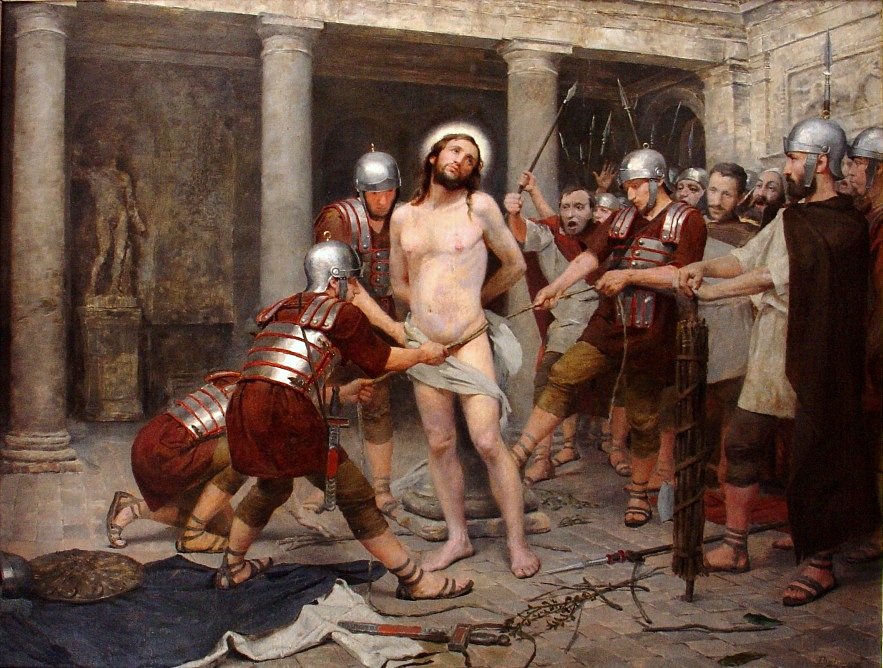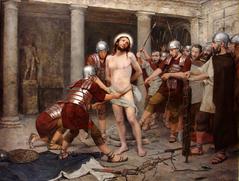
Complete Guide to Visiting the Convent of Santo Antônio in Rio de Janeiro: Tickets, Hours & Visitor Tips
Date: 14/06/2025
Introduction
Perched atop the historic Morro de Santo Antônio and overlooking the vibrant Largo da Carioca, the Convent of Santo Antônio stands as one of Rio de Janeiro’s most significant colonial-era landmarks. Founded in the early 17th century by Franciscan friars, it is among the oldest religious complexes in Brazil and an outstanding example of Baroque and Rococo architecture. The convent’s rich history, artistic treasures, and ongoing spiritual significance make it a must-see destination for visitors interested in art, culture, and Brazilian heritage.
This detailed guide provides everything you need to plan your visit, including the convent’s historical background, architectural highlights, practical information on opening hours and tickets, accessibility, and nearby attractions. Whether you are a history buff, architecture enthusiast, or spiritual traveler, the Convent of Santo Antônio offers a unique and enriching experience.
For authoritative information, consult the Franciscan Order’s official page, Rio tourism portal, and heritage organizations.
Table of Contents
- The Convent’s Historic Legacy
- Origins and Foundation
- Architectural Evolution and Highlights
- Artistic Treasures and Decorative Details
- Cultural and Religious Importance
- Key Events and Traditions
- Visiting Information
- Festivals and Community Life
- Restoration and Preservation
- FAQs
- Tips for a Memorable Visit
- Conclusion
- References
The Convent’s Historic Legacy
The Convent of Santo Antônio is a testament to Rio de Janeiro’s colonial past, embodying centuries of religious, cultural, and social history. Since its establishment, it has played a central role in the development of the city, both as a spiritual sanctuary and a backdrop for important historical events.
Origins and Foundation
The arrival of Franciscan friars in 1592 marked the beginning of the convent’s history. Granted land on Santo Antônio hill in 1607, construction began in 1608 under Frei Francisco dos Santos. The first mass was celebrated in 1615, and by 1620, the main complex was completed. The surrounding lagoon was filled in 1679, shaping what is now the busy Largo da Carioca (Franciscanos).
Architectural Evolution and Highlights
The convent’s architecture chronicles the stylistic changes of Brazil’s colonial era:
- Facade: The Largo da Carioca-facing facade features distinctive square windows, a prominent stone buttress, and a portico (1779-1781) crowned by a statue of St. Anthony.
- Bell Tower: Rather than a traditional steeple, the convent has a stone bell tower adjacent to the entrance.
- Baroque and Rococo Interiors: The rectangular nave is adorned with gilded woodwork, Baroque altars, and paintings depicting the life of St. Anthony. The facade was later embellished with lioz limestone Baroque portals and a neo-colonial pediment in the 1920s (Wikipedia).
- Sacristy: Renowned as one of Rio’s most beautiful, the sacristy features carved jacaranda wood cabinets, Portuguese azulejos, marble mosaic floors, and a centerpiece chest by Manuel Alves Setúbal (1745).
- Cloisters: The peaceful quadrangular cloisters, lined with arcaded walkways and Tuscan columns, are adorned with 18th-century Portuguese blue-and-white azulejos (Imaginario de Janeiro).
Notable artworks include the 1678 “Ecce Homo” image and busts honoring the Eighteen Martyrs of Japan.
Artistic Treasures and Decorative Details
- Sacristy: The sacristy’s artistry is evident in its marble floors, azulejos depicting the miracles of St. Anthony, and a painted ceiling with Marian scenes.
- Church Interior: The main altar, with its gilded wood and jacaranda, is a striking example of colonial craftsmanship. Side chapels feature unique iconography and elaborate Baroque decoration (Museu de Arte Sacra).
- Cloisters and Chapels: The tranquil cloisters and lesser chapels offer moments of quiet reflection away from the city’s bustle.
Cultural and Religious Importance
The Convent of Santo Antônio has been a center for religious, educational, and charitable activity for centuries:
- Franciscan Heritage: The Franciscans’ dedication to service, education, and social work is evident through the convent’s ongoing programs and community outreach (Franciscanos).
- Major Pilgrimage Site: The church is a popular destination for those seeking the intercession of St. Anthony, especially for blessings related to marriage and lost items (Lonely Planet).
- Festivals: The annual Feast of St. Anthony (June 13) draws thousands for Masses, the distribution of blessed bread, and cultural fairs (Riotur).
Key Events and Traditions
- French Invasion (1710): The convent was a symbol of resistance, and St. Anthony was ceremoniously given a military rank in gratitude for protection. This tradition continued with symbolic promotions for the saint until 1911 (Wikipedia).
- Role in Independence: Key declarations in the lead-up to Brazilian independence were drafted at the convent. The site also temporarily housed the remains of Empress Leopoldina.
- Educational Influence: Since 1650, the convent has been a center for arts, philosophy, and theology, shaping generations of clergy and laypeople.
Visiting Information
Hours & Admission
- Opening Hours: Tuesday to Sunday, 9:00 AM–5:00 PM. Closed Mondays and public holidays.
- Admission: Free; donations are appreciated to support preservation. Guided tours are available upon request (may require advance booking or a small fee).
Accessibility
- The convent provides partial accessibility with ramps at the main entrance; however, some historic areas have stairs or uneven floors. Visitors with mobility needs should contact the administration in advance for assistance.
Directions
- Location: Largo da Carioca, downtown Rio de Janeiro.
- Getting There: Easily accessible by public transport. The nearest metro station is Carioca (5-minute walk). Several bus lines serve the area, and taxis or rideshare services can drop you at the entrance.
Nearby Attractions
- Church of the Third Order of Saint Francis of Penitence
- Candelária Church
- Metropolitan Cathedral
- Municipal Theater
- Saara Market District
- São Bento Monastery
All are within walking distance and offer additional cultural and historical insights.
Events and Photography Guidelines
- Photography: Allowed in most areas without flash or tripods. Please be respectful, especially during services.
- Special Events: The convent hosts religious festivals and community events throughout the year. The Feast of St. Anthony in June is especially popular.
Festivals and Community Life
Celebrations at the convent, such as the Feast of St. Anthony, fill the space with music, processions, and traditional foods. Curtains, tapestries, and lanterns adorn the church, and the convent becomes a focal point for Rio’s Catholic community (Franciscanos). The annual distribution of blessed bread is an enduring tradition of charity and hospitality.
Restoration and Preservation
The Convent of Santo Antônio is a recognized national monument (since 1938) and has undergone extensive restoration, notably before its 400th anniversary. Ongoing projects focus on structural integrity and art conservation, ensuring the site remains accessible for future generations (Iphan).
Frequently Asked Questions (FAQ)
What are the opening hours?
Tuesday to Sunday, 9:00 AM–5:00 PM. Closed Mondays and holidays.
Is there an admission fee?
No, but donations are appreciated.
Are guided tours available?
Yes, upon request. Some tours require advance booking.
Is the convent accessible for people with disabilities?
Main areas are accessible; some historic sections may be challenging.
Can I take photographs?
Yes, but please avoid flash and tripods and be respectful during services.
What nearby attractions can I visit?
Candelária Church, Municipal Theater, Saara Market, São Bento Monastery, and more.
Tips for a Memorable Visit
- Check the official website before your visit for updated hours and tour availability.
- Arrive early to enjoy a quieter, more contemplative atmosphere.
- Dress modestly out of respect for the active religious site.
- Engage with staff or guides to enrich your understanding of the convent’s history.
- Combine your visit with other downtown Rio cultural attractions.
Conclusion
The Convent of Santo Antônio stands as a living monument to Rio’s colonial heritage and spiritual life. Its architectural grandeur, artistic treasures, and ongoing community role provide visitors with a multifaceted experience—one that bridges Brazil’s past and present. By planning your visit with this guide, you’ll be well-prepared to discover, appreciate, and support one of Rio de Janeiro’s most emblematic historic sites.
For the latest visitor details, consult the official Convent of Santo Antônio website, World History Commons, and the Rio de Janeiro tourism portal.
Enhance your visit by downloading the Audiala app for audio tours and following us on social media for event updates and additional content.
References
- Convento de Santo Antônio (Rio de Janeiro), Wikipedia
- Church and Convent of Santo Antônio, Riotur
- Convento de Santo Antônio, Franciscanos
- San Antonio Convent, World History Commons
- Convento de Santo Antônio no Rio de Janeiro recebe restauro, IPHAN
- Convent of Santo Antônio Rio de Janeiro, Visit Brasil
- Museu de Arte Sacra
- Instituto Estadual do Patrimônio Cultural (INEPAC)
- Kasadoo Convent of St. Anthony
- Imaginario de Janeiro




















































